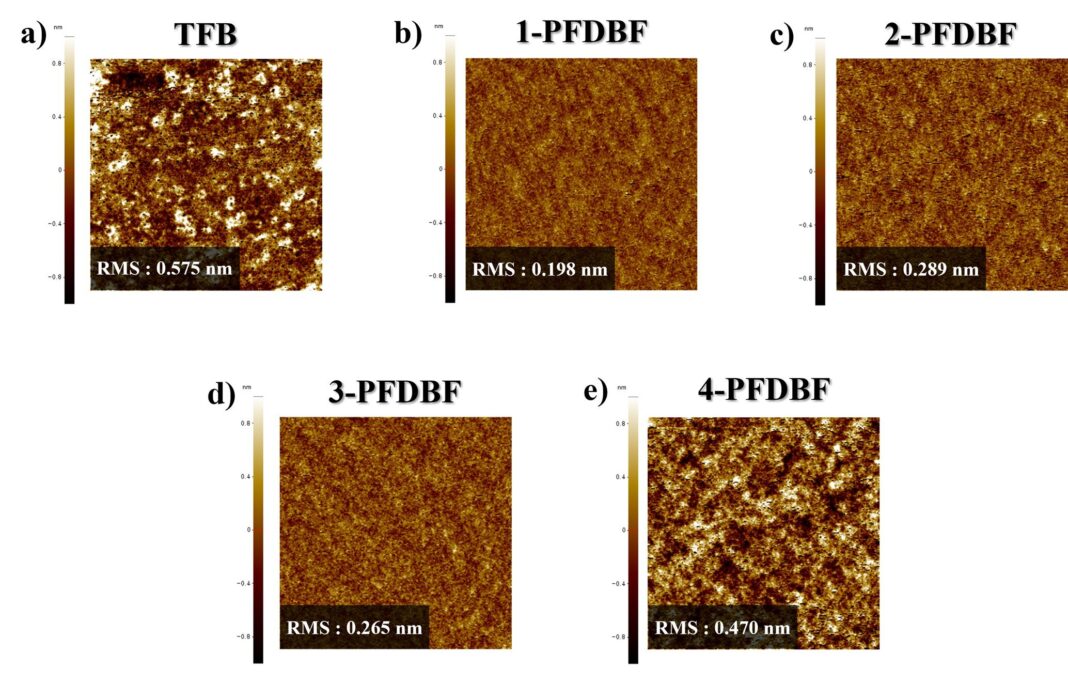A research team has developed a new material that can significantly enhance the lifetime and efficiency of quantum-dot light-emitting diodes (QLEDs), which is a next-generation display technology. Applying a high-binding-energy organic material, which is resistant to degradation under electrical and thermal stress, to the hole transport layer (HTL) is expected to contribute to developing next-generation QLEDs that can maintain brightness and stability over extended periods.
The study is published in the journal Small. The team was led by Professor Youngu Lee in the Department of Energy Science and Engineering at DGIST.
QLEDs have gained attention as next-generation displays thanks to their vivid colors and outstanding power efficiency. However, the commonly used triphenylamine-based HTL material has limitations, as its molecular structure is vulnerable to electrical stress, consequently causing device efficiency to deteriorate rapidly over time and resulting in a short lifetime. Although various attempts have been made to address this issue, they often faced a dilemma in which hole mobility and electron-blocking capability were simultaneously degraded.
To overcome these limitations, Professor Lee’s team developed a new organic HTL material incorporating the stable molecular structure of “dibenzofuran.” This material significantly increases intramolecular binding energy and enhances hole mobility while reducing electron back-leakage and surface defects, thereby improving both the efficiency and stability of QLEDs.
The team used this material to achieve a high external quantum efficiency (EQE) of 25.7% in green QLED devices. In addition, the device’s lifetime (T₅₀ at 100 cd m⁻²) reached approximately 1.46 million hours, 66 times longer than conventional devices, demonstrating long-term stability. This represents the highest performance among materials based on the same class (triarylamine) reported to date.
Professor Lee of the Department of Energy Science and Engineering at DGIST stated, “We have overcome the limitations of conventional materials with weak molecular bonds and developed a stable HTL that has dramatically improved the efficiency and lifetime of QLEDs. Moving forward, we will continue to apply high-binding-energy materials to a wide range of applications, including next-generation displays and solar cells.”
More information:
Youngjun Hwang et al, Boosting Efficiency and Longevity of Quantum Dot Light‐Emitting Diodes with Dibenzofuran‐Incorporated Hole Transport Materials Featuring High Bond Dissociation Energy, Small (2025). DOI: 10.1002/smll.202504867
Journal information:
Small
Provided by
Daegu Gyeongbuk Institute of Science and Technology
Citation:
High-binding-energy material achieves record QLED efficiency and lifetime (2025, August 25)
retrieved 26 August 2025
from https://phys.org/news/2025-08-high-energy-material-qled-efficiency.html
This document is subject to copyright. Apart from any fair dealing for the purpose of private study or research, no
part may be reproduced without the written permission. The content is provided for information purposes only.
